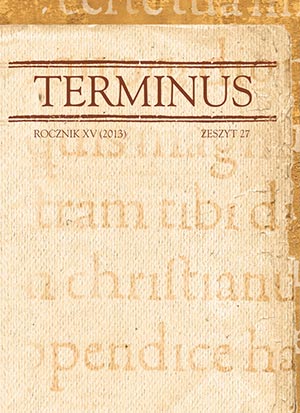The Use of Books in 16th-century Vilnius
The Use of Books in 16th-century Vilnius
Author(s): Jakub Niedźwiedź Subject(s): Literary Texts
Published by: Wydawnictwo Uniwersytetu Jagiellońskiego
Keywords: history of book; Vilnius; the Grand Duchy of Lithuania; early modern print culture; Cyrillic script; Latin script
Summary/Abstract: The main goal of the paper is to answer the question of what was unique about the use of books in Vilnius between 1522 and 1610. The reason to take a closer look at the capital of the Grand Duchy of Lithuania is the fact that it has always been a multi-cultural, multi-ethnic and multi-religious city. This observation allows the author to assume that the use of books there could have been different than in other European cities of the time. To find possible answers to the question posed, the author traces the changes in production, distribution and reading of books in the city. The research is based on several sorts of sources, such as printed books, manuscripts and documents from Vilnius archives (mainly the municipal archive, the Catholic chapter, the castle court etc.). He was supported by contemporary studies about early modern Vilnius scriptoria and printing houses (Kawecka-Gryczowa, Topolska, Nikalaieu), bookbinders (Laucevičius), book writing (Ulčinaitė, Narbutienė, Narbutas) and the history of the city (Frick). At the beginning of the paper the author recalls the main facts about Vilnius in the 16th century. The city had increasingly grown in importance as a political, economical and cultural centre of the Jagiellonian monarchy. The central part, divided in four chronologically arranged chapters, focuses on several problems, among them: the beginnings of Cyrillic prints and Skaryna’s printing house, languages and alphabets of books (Latin, Ruthenian, Polish, Lithuanian, German, Hebrew, Yiddish and Arabic), book production, dissemination, storage and reading. The author notices that a significant contributing factor to the spreading book culture in Vilnius was the royal court and chancery. He puts emphasis on the significance of humanistic schools that were established in Vilnius in the 2nd half of the 16th century by four different Christian confessions (Calvinist, Catholic, Lutheran and Orthodox). The most influential one was the Jesuit Academy of Vilnius. This process was accompanied by the establishment of no less than 11 printing houses. Having said that, the author argues that books printed in Vilnius, imported to the city and held in its libraries reflect a fruitful competition between main religious communities. At the end, the author reaches the conclusion that the use of books in Vilnius was similar to other European cities of the time, yet the capital of Lithuania still seems to be a good deal more complex a case. He ventures a hypothesis that the book can be deemed as one of the tools or factors by which religious or ethnic identity in Vilnius was defined.
Journal: TERMINUS
- Issue Year: 15/2013
- Issue No: 2 (27)
- Page Range: 167-184
- Page Count: 18
- Language: English

